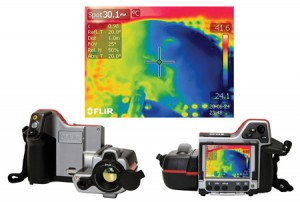
Welcome back and here we are again with Harvard Apparatus. You might ask what else Harvard Apparatus has for technology, and here we are with your answer. They use electro spinning and infrared cameras to assist researchers.
Electro spinning is a relatively new technology where charged liquid goes through an electromagnetic field. Once it travels through the field the polymer within the liquid threads itself on the drum and creates a scaffold of homogeneous thickness. The voltage in the electromagnetic field causes the polymer to become strand-like and intertwine with itself on the drum. The cells adhere to the thin proliferation on the drum and create the tissue necessary. In order to produce different morphologies and orientations of tissues, the parameters of both the polymer and the process can be adjusted. However, mapping can be difficult since the polymers do not intertwine the same way every time.
Harvard Apparatus also uses infrared cameras to monitor the function of organs. In the past there was no easy way to detect how a donor organ is functioning without using dyes or stains. Dyes and stains, however effective, negatively affect the organ and may make them unusable to be transplanted. The picture from the infrared camera uses the water content and the temperature of the cells in the organ to see how they’re functioning. This technology can be used as well to identify the exact spot a heart attack is occurring so a surgeon can inject stem cells after the attack to help the body repair the damaged cardiac tissue. It can also be used to diagnose and predict the appearance of a burn over a month later after only three hours so that treatment can be administered significantly sooner.
Using these two technologies, Harvard Apparatus is enabling researchers to make large advancements in the world of medicine and specifically regenerative medicine. Stick around as next time we will investigate how researchers used these and the technologies mentioned in our last blog to regenerate full organs, like the trachea to give people a whole new life. What do you think of this new technology? Let us know @TRA360!
